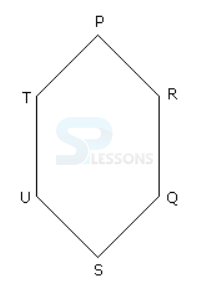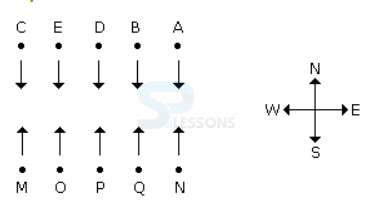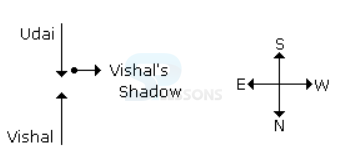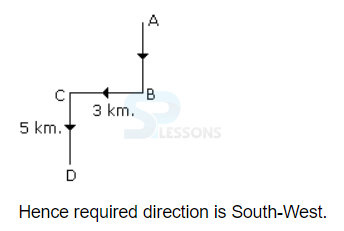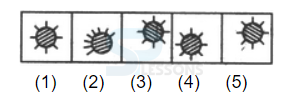 Introduction
Introduction
Scheme of Preliminary Examination for recruitment to the post of Apprentice Development Officer (ADOs) in LIC is as follows:
- Preliminary Examination consisting of the objective test will be conducted online.
- The test will have three sections (with separate timings for each section).
 Pattern
Pattern
| S.NO | Name of the Test | Number of Questions | Maximum Marks | Duration |
|---|---|---|---|---|
| 1. | Reasoning Ability | 35 | 35 | 20 Minutes |
| 2. | Numerical Ability | 35 | 35 | 20 Minutes |
| 3. | English | 30 | 30** | 20 Minutes |
| Total | 100 | 70 | 1 hour |
Note:
- ** English Language test will be of qualifying nature and the marks in English Language will not be counted for ranking.
- Candidates equal to 20 times of a number of vacancies in each category, subject to availability, will be shortlisted for the Main examination.
 Samples
Samples
Number series:
In each series, look for the degree and direction of change between the numbers. In other words, do the numbers increase or decrease, and by how much
1. Look at this series: 2, 1, ([latex]\frac{1}{2}[/latex]), ([latex]\frac{1}{4}[/latex]), ... What number should come next?
-
A. ([latex]\frac{1}{3}[/latex])
B. ([latex]\frac{1}{8}[/latex])
C. ([latex]\frac{2}{8}[/latex])
D. ([latex]\frac{1}{16}[/latex])
-
A. 7
B. 10
C. 12
D. 13
-
A. 11 5
B. 10 7
C. 11 8
D. 5 10
-
A. A16
B. G4
C. E4
D. E3
-
A. 70
B. 71
C. 80
D. 96
-
A. 1
B. 2
C. 3
D. 4
-
A. 1
B. 2
C. 3
D. 4
-
A. 1
B. 2
C. 3
D. 4
-
A. 1
B. 2
C. 3
D. 4
-
A. 1
B. 2
C. 3
D. 4
-
A. BUSH
B. GRASS
C. FOREST
D. BEAK
-
A. Rain
B. Stream
C. Pool
D. Canal
-
A. Lamb
B. Elephant
C. Lion
D. Horse
-
A. Islands
B. Mediators
C. Archealogy
D. Aquatic
-
A. Australia
B. America
C. Russia
D. England
-
A.1
B.2
C.3
D.4
-
A.1
B.2
C.3
D.4
-
A.1
B.2
C.3
D.4
-
A.1
B.2
C.3
D.4
-
A.1
B.2
C.3
D.4
- P is second to the right of T who is the neighbour of R and V.
- S is not the neighbor of P.
- V is the neighbor of U.
- Q is not between S and W. W is not between U and S.
-
A. RV
B. UV
C. RP
D. QW
-
A. P
B. U
C. R
D. T
-
A. P is to the immediate right of Q
B. R is between U and V
C. Q is to the immediate left of W
D. U is between W and S
-
A. Between U and V
B. Second to the right of P
C. To the immediate right of W
D. Data are inadequate.
-
A. Bindu
B. Rani
C. Mary
D. Seema
-
A. Bindu
B. Rani
C. Reeta
D. Seema
-
A. Mary
B. Rani
C. Reeta
D. Bindu
-
A. Reeta
B. Mary
C. Bindu
D. Seema
- Cadillac is next to right of Fargo.
- Fargo is fourth to the right of Fiat.
- Maruti car is between Ambassador and Bedford.
- Fiat which is third to the left of Ambassador is at one end.
-
A. Ambassador and Maruti
B. Maruti and Fiat
C. Fargo and Mercedes
D. Ambassador and Fargo
-
A. Maruti is next left of Ambassador.
B. Bedford is next left of Fiat.
C. Bedford is at one end.
D. Fiat is next second to the right of Maruti.
-
A. Fargo car is in between Ambassador and Fiat.
B. Cadillac is next left to Mercedes car.
C. Fargo is next right of Cadillac.
D. Maruti is fourth right of Mercedes.
-
A. Cadillac, Fargo, and Maruti
B. Mercedes, Cadillac, and Fargo
C. Maruti, Bedford, and Fiat
D. Bedford, Cadillac, and Fargo
-
A. R
B. Q
C. T
D. S
-
A. P
B. U
C. R
D. Data inadequate
-
A. U and P
B. T and R
C. U and R
D. Data inadequate
-
A. R
B. Q
C. Cannot be determined
D. S
- A ,B, C, D and E are five men sitting in a line facing to south - while M, N, O, P and Q are five ladies sitting in a second line parallel to the first line and are facing to North.
- B who is just next to the left of D, is opposite to Q.
- C and N are diagonally opposite to each other.
- E is opposite to O who is just next right of M.
- P who is just to the left of Q, is opposite to D.
- M is at one end of the line.
-
A. Q
B. N
C. M
D. Data inadequate
Answer: Option B
Explanation:
-
A. Q
B. P
C. E
D. D
-
A. EQ
B. BO
C. AN
D. AM
-
A. D
B. A
C. E
D. O
-
A. East
B. West
C. North
D. South
-
A. North
B. South
C. South-East
D. None of these
-
A. North-East
B. North-West
C. South-East
D. South-West
-
A. West
B. South
C. North-East
D. South-West
-
A. South-East
B. South
C. North
D. West
-
A. 1
B. 2
C. 3
D. 4
E. 5
-
A. 1
B. 2
C. 3
D. 4
E. 5
-
A. 1
B. 2
C. 3
D. 4
E. 5
-
A. 1
B. 2
C. 3
D. 4
E. 5
-
A. 1
B. 2
C. 3
D. 4
E. 5
-
A. Sunday
B. Saturday
C. Friday
D. Wednesday
-
A. Thursday
B. Friday
C. Saturday
D. Sunday
-
A. Monday
B. Tuesday
C. Wednesday
D. Thursday
-
A. Sunday
B. Monday
C. Tuesday
D. Friday
-
A. Wednesday
B. Saturday
C. Tuesday
D. Thursday
-
A. 35
B. 36
C. 45
D. 54
-
A. 9
B. 11
C. 13
D. 15
-
A. 3
B. 4
C. 9
D. Cannot be determined
E. None of these
-
A. 4
B. 8
C. 16
D. None of these
-
A. 18
B. 24
C. 42
D. 81
-
A. Alfredo's offers fine Italian cuisine and elegant Tuscan decor. Patrons will feel as though they've spent the evening in a luxurious Italian villa.
B. Pancho's Mexican Buffet is an all-you-can-eat family style smorgasbord with the best tacos in town.
C. The Parisian Bistro is a four-star French restaurant where guests are treated like royalty. Chef Dilbert Olay is famous for his beef bourguignon.
D. Marty's serves delicious, hearty meals in a charming setting reminiscent of a baseball clubhouse in honor of the owner, Marty Lester, a former major league baseball all-star.
-
A. 1, 2
B. 2, 3
C. 1, 4
D. 2, 4
-
A. A girl is sitting glumly on a bench reading a book and not interacting with her peers.
B. Four girls are surrounding another girl and seem to have possession of her backpack.
C. Two boys are playing a one-on-one game of basketball and are arguing over the last basket scored.
D. Three boys are huddled over a handheld video game, which isn't supposed to be on school grounds.
-
A. JXK 12L
B. JYK 12L
C. JXK 12I
D. JXX 12L
-
A. 995-9266
B. 995-9336
C. 995-9268
D. 995-8266
-
A. Brother
B. Uncle
C. Cousin
D. Father
-
A. Q - N + M x P
B. P + S x N - Q
C. P - M + N x Q
D. Q - S % P
-
A. Brother
B. Sister
C. Nephew
D. Cannot be determined
-
A. M - N x C + F
B. F - C + N x M
C. N + M - F x C
D. M x N - C + F
-
A. Brother
B. Nephew
C. Uncle
D. Son-in-law
-
A. Chicken
B. Snake
C. Swan
D. Crocodile
E. Frog
-
A. Cap
B. Turban
C. Helmet
D. Veil
E. Hat
-
A. Kiwi
B. Eagle
C. Emu
D. Ostrich
-
A. Rigveda
B. Yajurveda
C. Atharvaveda
D. Ayurveda
-
A. Curd
B. Butter
C. Oil
D. Cheese
-
A. ATSSTS
B. EQDDYD
C. ESDDYD
D. EQDDZD
-
A. SQBHOHOF
B. UQBHOIOF
C. UQBHOHOI
D. UQBHOHOF
-
A. ATAETNR
B. OTAETNR
C. OTAESNR
D. STAETNR
-
A. CPNCBZ
B. CPNCBX
C. DPNCBZ
D. DPNCBX
-
A. EJTQPTF
B. EJTQPTG
C. CHRPNRD
D. CHRONRD
-
A. 12
B. 16
C. 18
D. 24
-
A. 5
B. 7
C. 10
D. 12
-
A. 13
B. 15
C. 17
D. 20
-
A. 40 years
B. 45 years
C. 50 years
D. 60 years
-
A. 7
B. 8
C. 9
D. 11
























